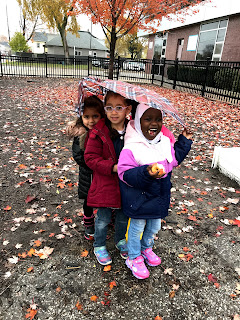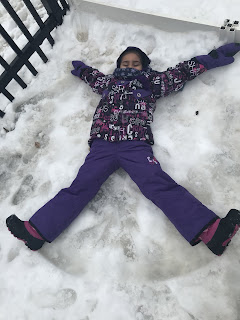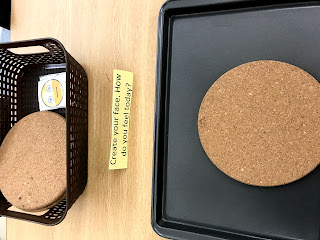When students are outside, there is so much to learn and explore...
 |
| https://www.pinterest.ca/pin/287245282454065429/ |
A learning story in our class..
Rokaya and the Tree.
I enjoyed every picture, painting, representation, craft that you created of our kindergarten tree in the courtyard outside. The first picture that you drew at school this year was of you and your friends under that tree. Your drawings have grown in detail because your observations and connections with the tree have grown as well. When we talk about weather changes during our learning circles, you mention the changes you have noticed about our tree. In the beginning of the year, you made a bird feeder using a bagel, margarine, and bird seeds, because you said the tree is lonely and wants the birds to come make a nest on its branches. You said, “the birds like to come sing in our tree so I will put them a snack when they come and they will go in the hole in the bagel too” just like the hole in the bird feeder house you have in your backyard. When we go outside you bring your toys and shovel, paper and clipboard and you play under the tree. When we are inside, you look out of the window to draw your next beautiful picture of the tree. When the Fall season came, you noticed that the leaves changed colour and you said, “the leaves are red, that’s my favourite colour.” Then you were sad when they fell down. But you asked your friends to collect them all with you and your pictures of the tree started having red leaves glued on the paper just like our tree looked like. You sorted the leaves into groups of fall colours, yellow, brown, orange and red. Your connections grew when you noticed that the leaves you collected look like the red leaf on our Canada flag that is beside the window in our class. You asked me, “Why is it the same leaf?” We brought in books from the library about the different trees found in our area, and we watched videos of “maple trees” and more questions were asked by your friends about “maple syrup”.
Next Steps:
We will go for a walk to see if all the trees lost their leaves or if there are trees that keep them when the weather gets colder. Your wonder journal included pictures of a tree in the summer, in the fall and then you wondered what would happen in the winter and spring… I asked you if you remember what happened last winter?
We will go on a field trip to John R Park Homestead Conservation Area in the spring to harvest sap from maple trees.
Life cycle of a tree.
Treehouses, animals that live in or around trees, etc..
And then you collected leaves, sorted them, made leaf people, collected the last vegetables from our garden...


And you wanted to make a habitat for the snails you found outside because it was getting cold...

You noticed the birds flying together, we learned about migrating to a warmer place, the weather getting colder and the snow started coming..
We learned about properties of snow, built a snowman...
Then Spring came and you were interested in butterflies, you learned about flowers that attract them and planted wild flowers, we raised butterflies and then let them go into their own habitat...
You noticed that the plants and the grass was growing again, we planted seeds to make our outdoor area more attractive to snails and butterflies..



























































